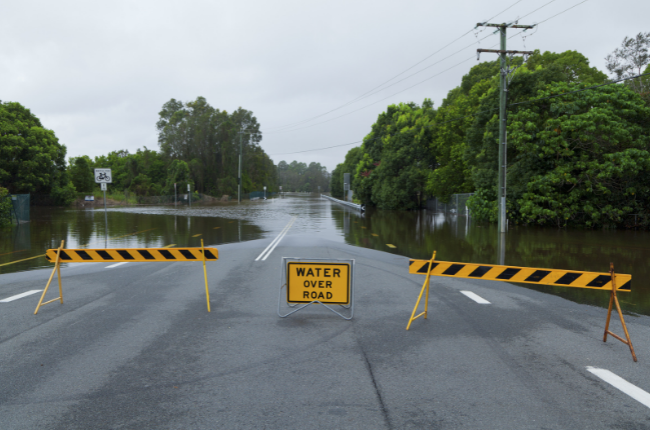After a cold Aussie winter, when spring comes around, it’s easy to think of the positives of warmer weather finally arriving.
However, there’s a negative side to this seasonal change we often forget: stormy weather, heavy rain and flooding.
These extreme weather conditions can wreak havoc across rural roads.
And damaged road surfaces can lead to a myriad of serious concerns: from road closures to more severe consequences, such as road accidents and fatalities.
The challenge for councils?
Balancing prevention, response and future thinking to protect drivers and reduce liability.
With spring’s erratic weather patterns already bearing down on us, now is the perfect time to take stock of your planning. Here’s our advice on how to do it right.
The importance of planning: Rain, risk and rural roads
Roads are a mammoth piece of infrastructure for councils to manage. They present such a challenge that councils can struggle with their planned construction and maintenance programs.
So it’s no surprise that suddenly adding unplanned maintenance into a works schedule can lead to a whole new host of stressors.
Stretched resources, bust budgets and time challenges aplenty. All of which pose a significant risk to councils if not managed correctly.
That’s why it’s imperative councils have a plan in place for when the inevitable happens. That way, when disaster strikes, councils can mobilise quickly – and direct resources to where they’re needed.
Planning your response to a storm event
Rain and flood damage pose serious risks to road users in rural NSW.
Why? Because unlike their urban counterparts, roads in these areas are often unsealed and undergo less frequent repairs.
Common hazards posed by significant rainfall include rough and bumpy road edges, slick surfaces, standing water, snow, ice and objects falling onto the road.
When planning a response to storm events, councils should:
- Identify roads that are known to be affected by rain and flooding
- Understand which roads are priority routes
- Determine resource availability ahead of time (both plant and personal)
- Choose realistic road closures to limit damage to the network
- Strategise modes of notifying residents
Minimising risk with road safety signs
After you’ve identified your roads that are affected by rain and flooding, warning signs should be erected in key locations.
Key signs to consider include:
- Water over road (T2-13)
- Rough surface (T3-7)
- Slippery surface (T3-3)
- Traffic hazard (T1-10)
These signs will need regular maintenance and should be checked before any predicted major storm events.
After the storm: Mapping out priorities
Post-event actions should be prioritised based on short-, medium- and long-term needs. This will reduce council financial exposure and liability.
Emergency actions (short-term) involve:
- Allocating resources (plant and personal)
- Erecting warning signs (including ‘Road closed’ and ‘Detour’ signs)
- Removing debris
Rectification actions (medium-term) involve:
- Patching potholes and washouts
- Reforming unsealed priority roads
- Inspecting stormwater infrastructure
Future actions (long-term) involve:
- Reviewing asset management plans to incorporate climate change
- Using design and road materials to reduce high moisture interaction
With an organised response, roads can be returned to a safe condition and access restored quickly.
Understand your liabilities
It’s important to know your council’s responsibility when it comes to the impact of weather conditions on rural roads. Two sections of The Civil Liabilities Act (2002) highlight these.
Section 42 details defences against claims of council negligence. Essentially, this section says that councils will not be liable for negligence where its functions are limited by financial and other resources available to it.
Section 45 says that councils are protected against harm that’s been caused from failing to carry out (or consider carrying out) road works. That is, unless council had actual knowledge of the risk and understood that it could cause harm – and did nothing to act on it.
Need further support?
If you are facing issues with your road asset network, Statewide Mutual is here to help. Your Regional Risk Manager should be your first port of call.

